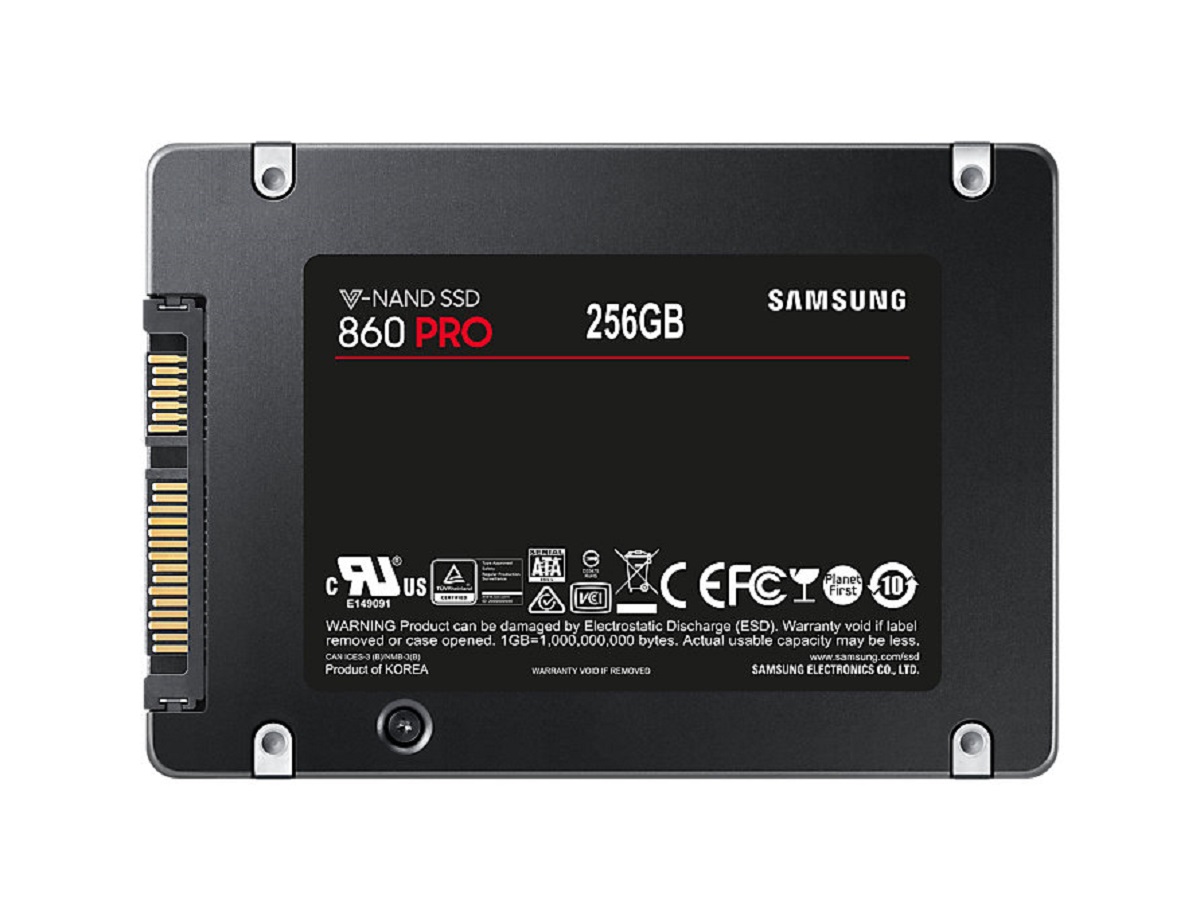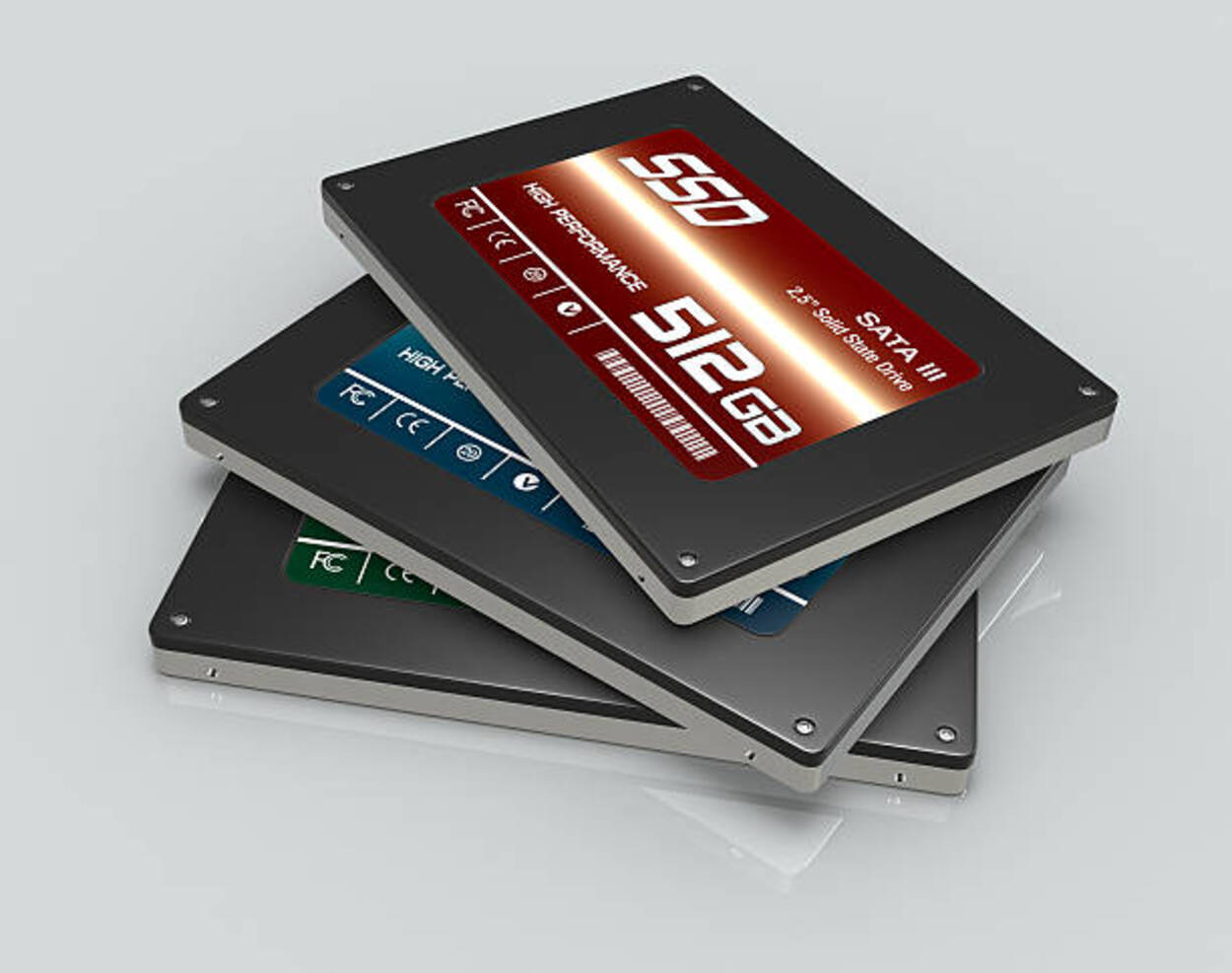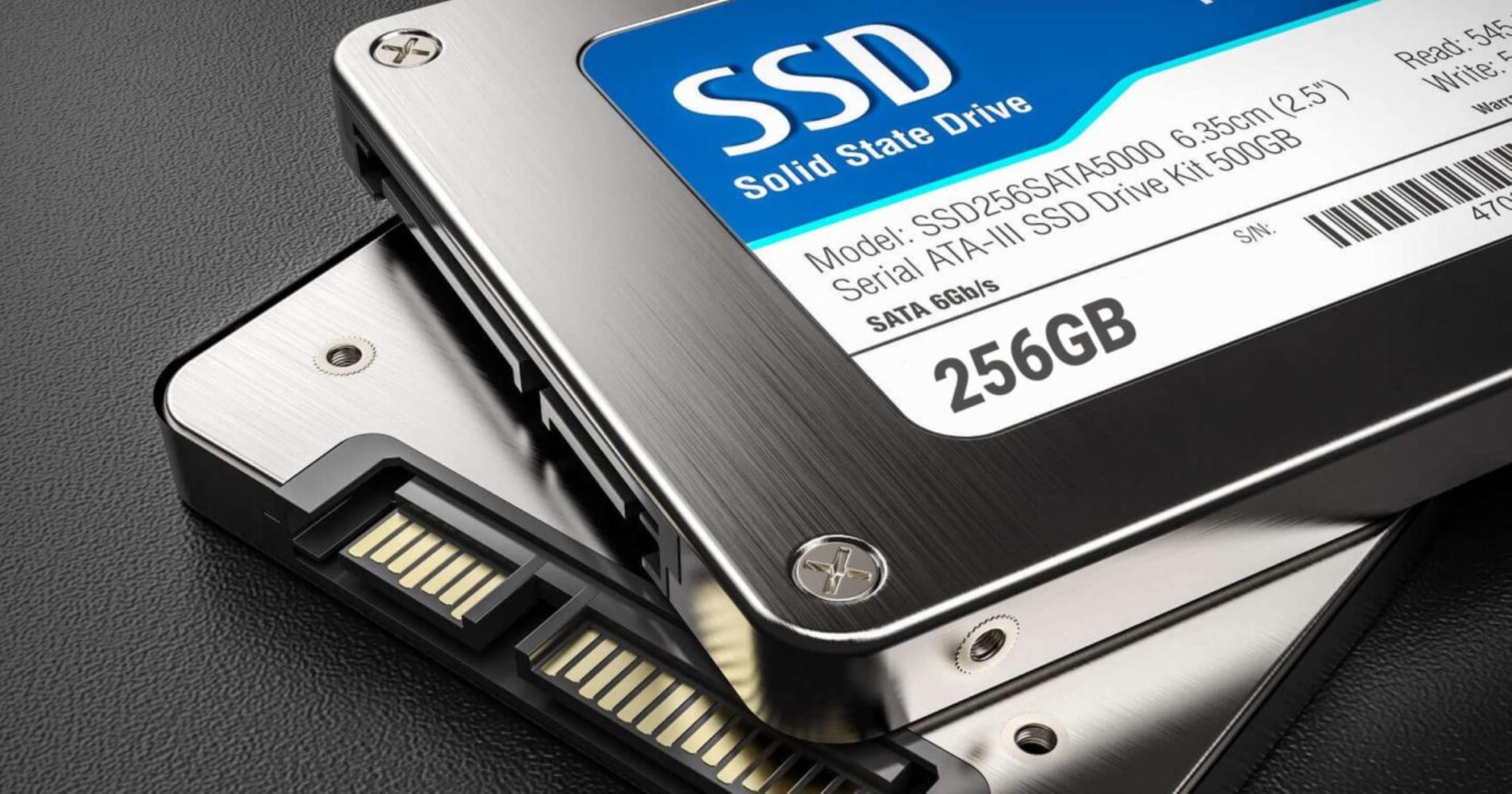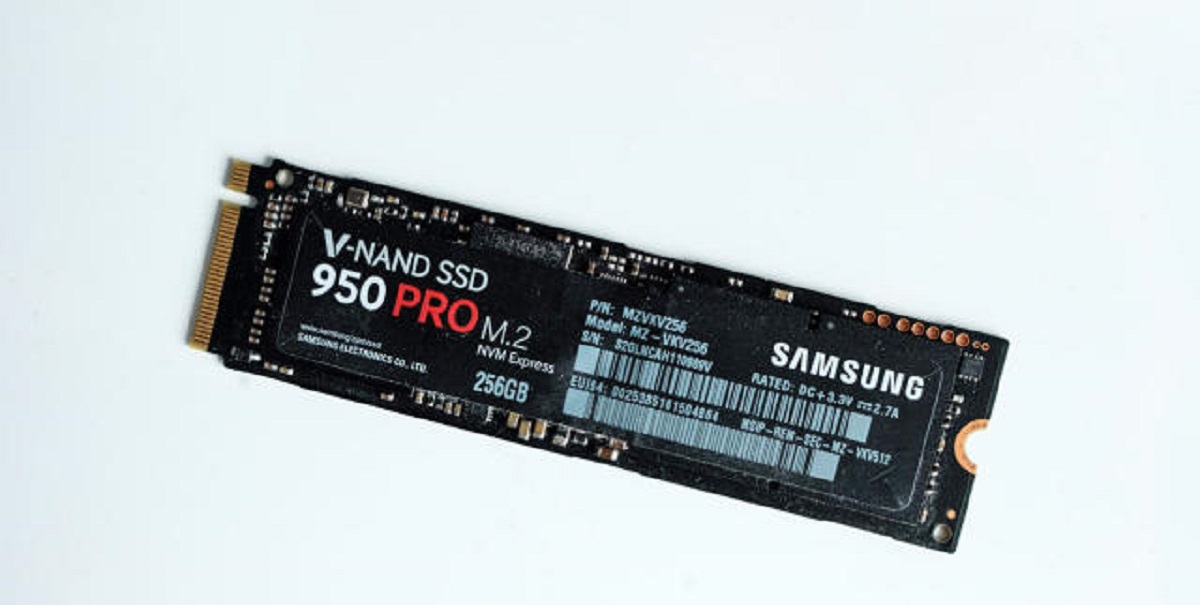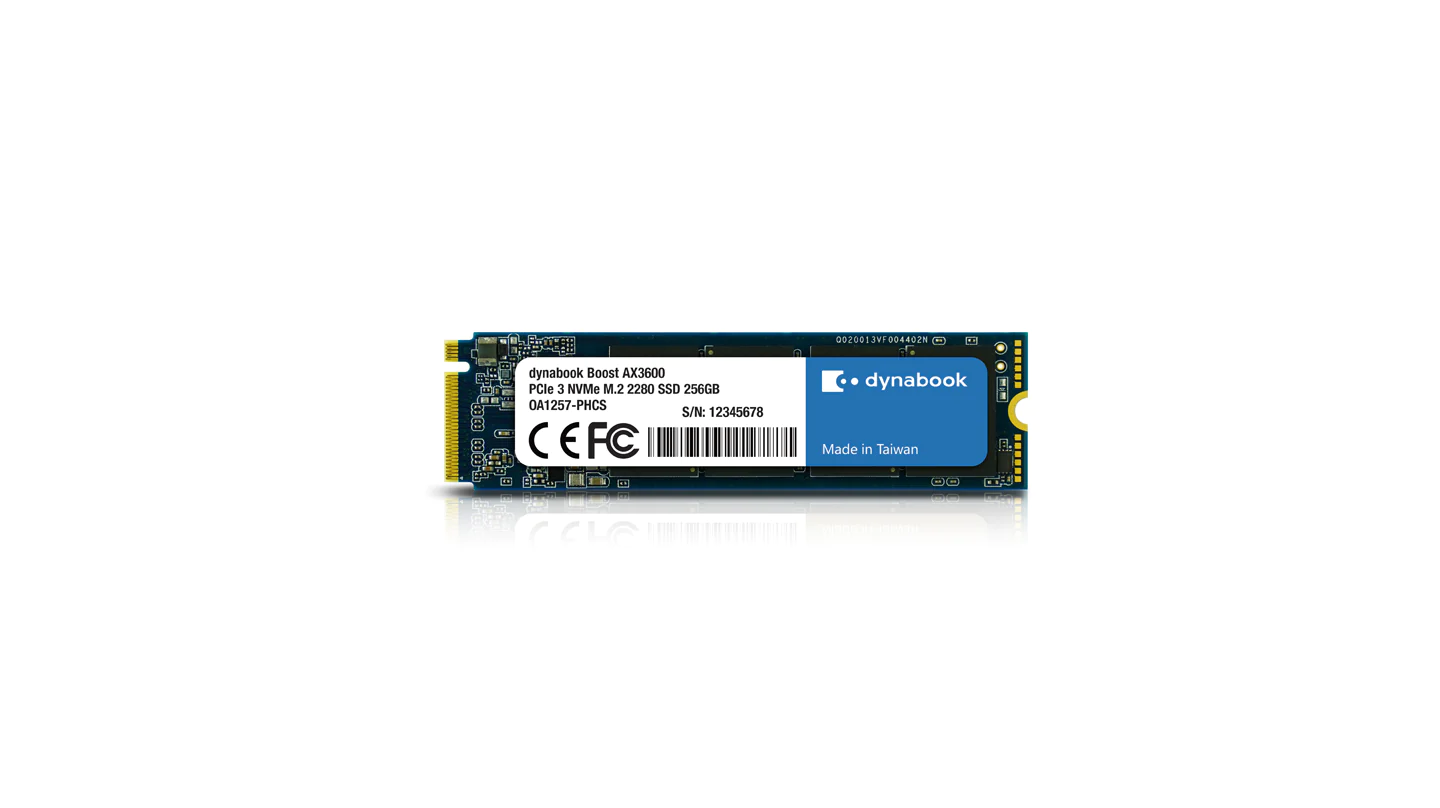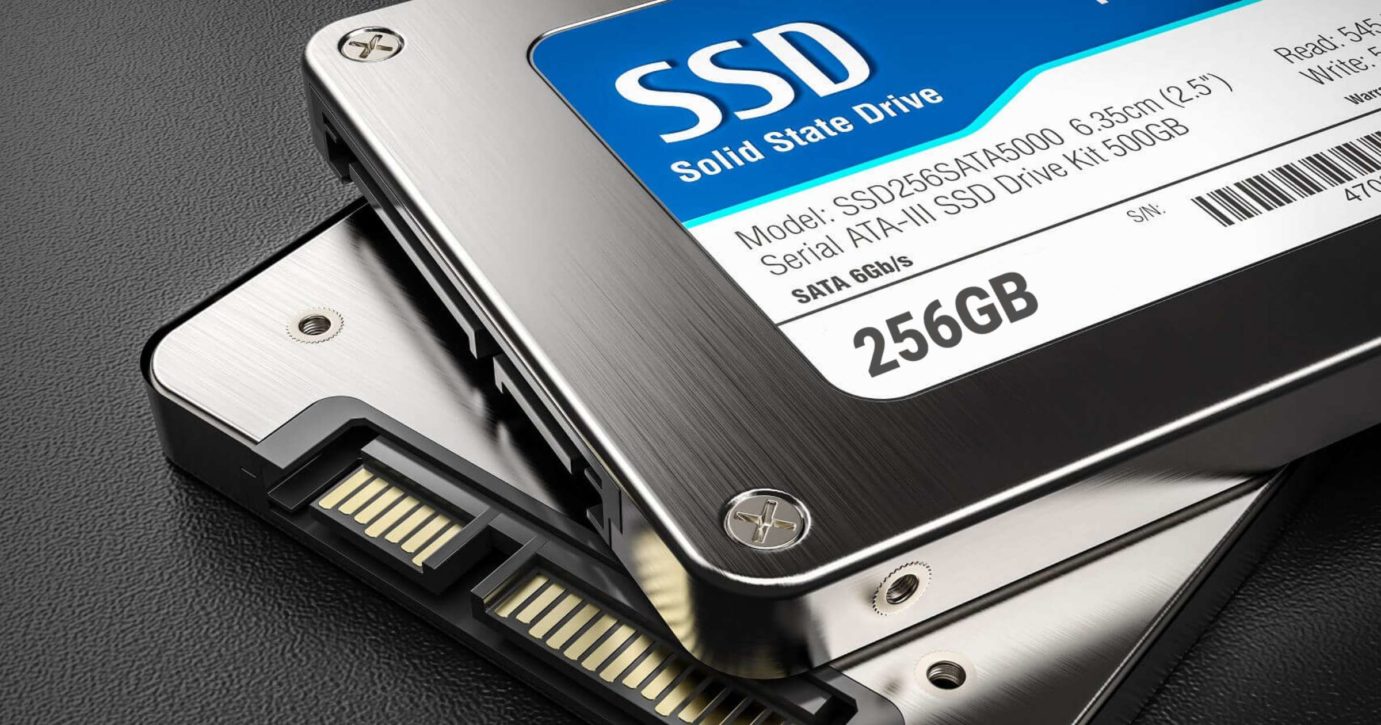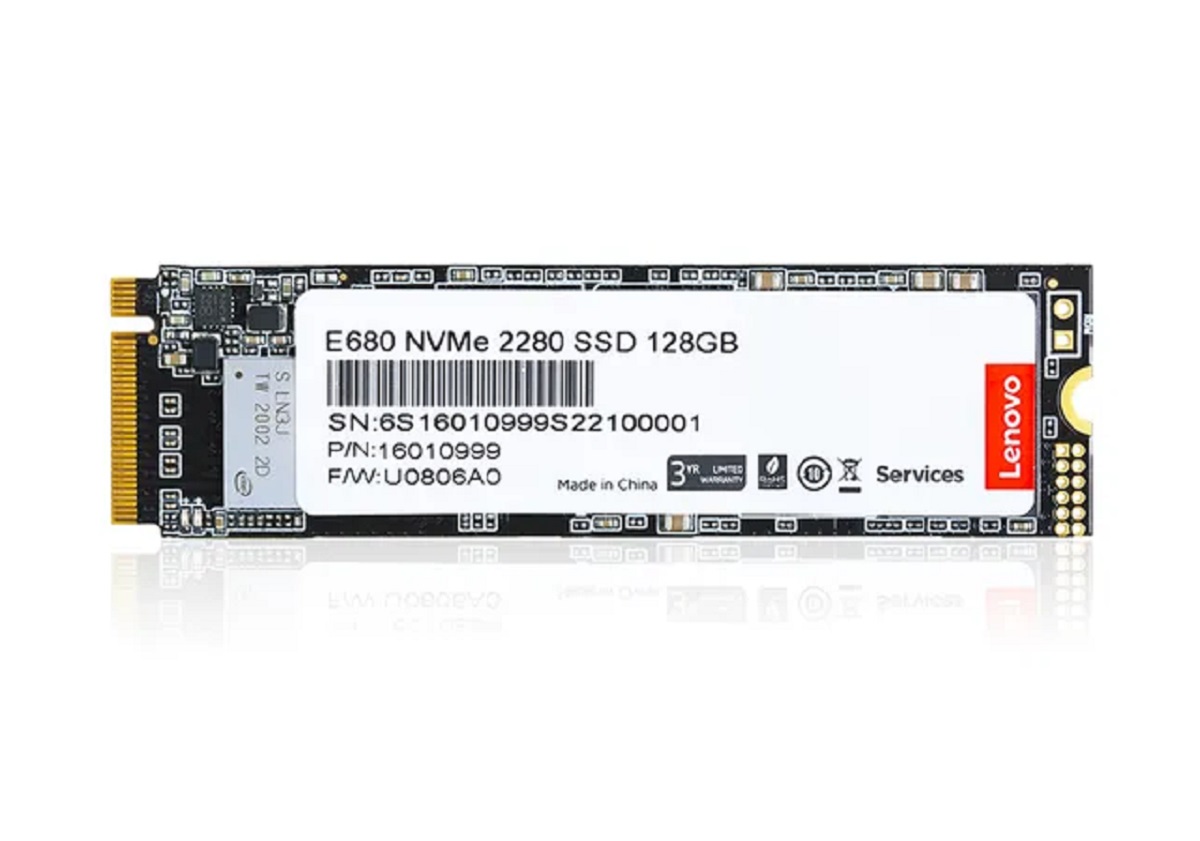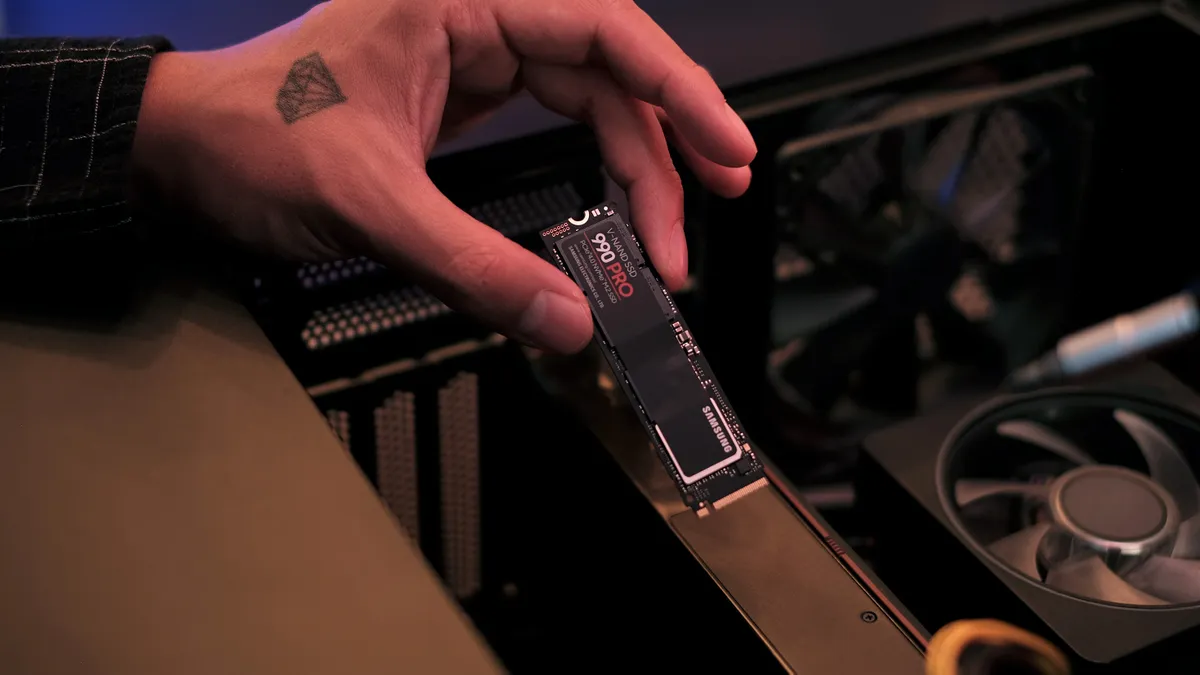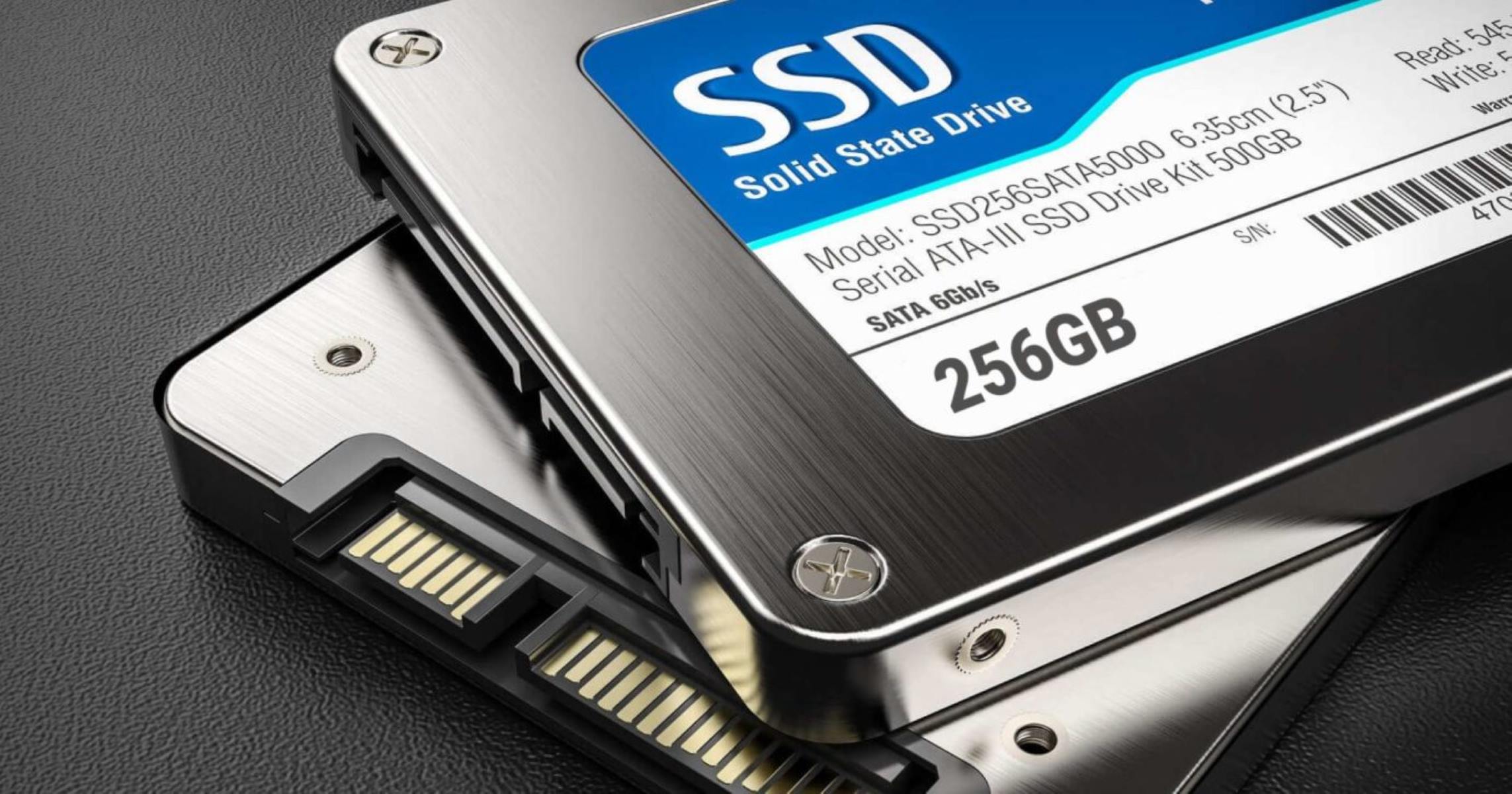Introduction
Welcome to this article on “What Is 256 GB SSD”. In today’s digital age, where data storage and speed are of utmost importance, solid-state drives, or SSDs, have emerged as a popular choice for users seeking enhanced performance and reliability. The 256 GB SSD, with its optimal storage capacity, strikes a balance between affordability and functionality, making it a favored option for both professionals and casual users alike.
As technology continues to advance, the demand for faster and more efficient storage solutions has become a priority. Traditional hard disk drives (HDDs) are being gradually replaced by SSDs due to their superior performance, reliability, and durability. In this article, we will delve into what an SSD is, what the 256 GB capacity signifies, the differences between SSDs and HDDs, and the advantages and disadvantages of opting for a 256 GB SSD.
Whether you’re a student, a content creator, a gamer, or someone who simply wants to increase the performance of their computer, understanding the features and benefits of a 256 GB SSD can help you make an informed decision. In a world where data storage needs are ever-growing, this article aims to provide you with insights into the advantages and limitations of this specific storage capacity, allowing you to determine if it is suitable for your needs.
What is SSD?
A solid-state drive, commonly referred to as an SSD, is a type of storage device that uses integrated circuit assemblies to store data persistently. Unlike traditional hard disk drives (HDDs) that rely on spinning disks and mechanical components, SSDs use flash memory, which provides faster access times, increased reliability, and improved overall performance.
The primary component of an SSD is the flash memory chips, which store data in a non-volatile manner. This means that even when the power is turned off, the data remains intact, eliminating the need for constant power supply to retain information. SSDs also have a controller that manages the data flow and ensures efficient reading and writing operations.
One of the key advantages of SSDs is their speed. Compared to HDDs, SSDs offer significantly faster data transfer rates, allowing for quicker boot times, file access, and overall system performance. This attribute is particularly beneficial in tasks that require frequent data access, such as running applications, loading large files, or multitasking.
In addition to speed, SSDs are also known for their durability. Since they lack moving parts, SSDs are less susceptible to physical damage caused by shocks or vibrations. This makes them more reliable and resistant to failures that can occur in traditional HDDs.
SSDs are available in various form factors, including 2.5-inch drives for laptops and desktops, M.2 drives for ultra-thin devices, and PCIe cards for high-performance systems. They are compatible with most operating systems and can be easily installed or upgraded in existing hardware configurations.
Overall, SSDs have revolutionized the storage industry by offering faster, more reliable, and durable data storage solutions. The 256 GB SSD, with its moderate storage capacity, strikes a balance between affordability and functionality, making it an attractive choice for individuals seeking improved performance without breaking the bank. Whether you’re a gamer, a content creator, or a professional in need of speedy data access, an SSD can greatly enhance your computing experience.
What is 256 GB?
When we talk about storage capacity, gigabytes (GB) are used to measure the amount of data that a device can hold. In the case of a 256 GB SSD, it refers to the storage capacity of the solid-state drive. A gigabyte is equivalent to one billion bytes, and so a 256 GB SSD can store approximately 256 billion characters or units of information.
To put it into perspective, 256 GB is a significant amount of storage space that can accommodate a wide range of files, applications, and media content. It allows you to store a substantial number of documents, photos, videos, and music files, providing ample space for your digital needs.
To give you a better idea of what 256 GB can hold, consider the following examples:
- Around 64,000 high-resolution photos (4 MB each)
- Approximately 36 hours of Full HD video footage (at an average bitrate of 8 Mbps)
- Over 51,000 songs (at an average file size of 5 MB)
The actual amount of data that can be stored may vary depending on the file format and compression. Additionally, keep in mind that the operating system and other pre-installed software may occupy a portion of the storage space, reducing the available capacity for user data.
While 256 GB is considered a moderate storage capacity, it is generally sufficient for most casual users. However, it is crucial to assess your specific requirements before opting for a 256 GB SSD. If you work with large files, such as high-resolution videos or complex software applications, you may need a higher capacity SSD to accommodate your needs adequately.
The 256 GB SSD strikes a balance between affordability and functionality, making it an excellent choice for users who want to enjoy the benefits of solid-state storage without paying for excessive storage capacity they may not fully utilize.
What is the difference between SSD and HDD?
The primary difference between a solid-state drive (SSD) and a hard disk drive (HDD) lies in the technology they use to store data and access information. While both are storage devices, they have distinct characteristics that set them apart.
1. Technology: SSDs use flash memory technology, which stores data electronically in cells. On the other hand, HDDs consist of spinning platters coated with a magnetic material that stores data in binary form.
2. Speed and Performance: SSDs offer significantly faster data transfer rates when compared to HDDs. This enables quicker boot times, faster application loading, and snappier overall system performance. With no moving parts, SSDs have virtually zero latency, resulting in rapid access times and reduced data transfer bottlenecks.
3. Reliability and Durability: SSDs are generally more durable and reliable than HDDs. Since they have no moving components, they are less susceptible to mechanical failures caused by vibrations or shocks. In contrast, HDDs are more prone to damage when subjected to physical disturbances, which can lead to data loss.
4. Power Consumption: SSDs consume less power than HDDs. This is especially important for laptops and portable devices where battery life is a crucial factor. The absence of spinning disks in SSDs translates to lower power requirements, resulting in improved energy efficiency and extended battery life.
5. Noise and Heat: SSDs produce little to no noise during operation as there are no moving parts. In contrast, HDDs can be noisy due to the spinning platters and moving read/write heads. Similarly, SSDs generate less heat compared to HDDs, making them suitable for compact systems and environments with limited cooling capabilities.
6. Cost: Historically, SSDs have been more expensive than HDDs for the same storage capacity. While the price gap has decreased over the years, SSDs still tend to be pricier per gigabyte than HDDs. However, the benefits of SSDs, such as faster performance and reliability, often outweigh the higher cost for many users.
In summary, SSDs offer faster speeds, better performance, increased durability, lower power consumption, and improved reliability compared to HDDs. While HDDs still have their place in certain applications and offer more storage capacity at a lower cost, SSDs have become the preferred choice for those seeking enhanced performance and responsiveness in their computing experience.
Advantages of 256 GB SSD
The 256 GB solid-state drive (SSD) offers several advantages that make it an enticing choice for users seeking improved storage performance and reliability. Here are some key advantages of opting for a 256 GB SSD:
1. Faster Performance: One of the significant advantages of SSDs is their speed. With faster data transfer rates and virtually no latency, a 256 GB SSD can significantly enhance overall system performance. It enables quicker boot times, faster application loading, and smoother multitasking, allowing you to work or play more efficiently.
2. Improved Responsiveness: The faster access times of an SSD compared to a traditional hard disk drive (HDD) result in improved responsiveness. Launching applications, opening files, and navigating through folders becomes quicker, allowing for a more seamless user experience.
3. Enhanced Reliability: Unlike HDDs that rely on spinning platters and moving parts, SSDs have no mechanical components that are prone to wear and tear. This makes a 256 GB SSD more reliable and less susceptible to failures caused by physical damage, such as shocks or vibrations. This increased durability ensures that your data remains safe and accessible.
4. Energy Efficiency: SSDs consume less power compared to HDDs. This results in improved energy efficiency and longer battery life for laptops and other portable devices. With a 256 GB SSD, you can expect your device to run longer on a single charge, making it ideal for users on the go.
5. Compact and Lightweight: SSDs are compact and lightweight, making them easy to install and suitable for various form factors. Whether you’re upgrading a laptop or building a small form-factor desktop, a 256 GB SSD provides ample storage space without adding bulk to your device.
6. Noiseless Operation: Since SSDs have no moving parts, they operate silently. Unlike HDDs that often produce noise due to spinning disks and read/write heads, a 256 GB SSD ensures a noise-free computing environment, allowing for a more peaceful and focused experience.
7. Quick File Transfers: SSDs excel in file transfer speeds, making it faster and more efficient to move or copy large files. Whether you’re working with multimedia content, transferring data between drives, or making backups, a 256 GB SSD will significantly reduce the time required for these operations.
In summary, a 256 GB SSD offers several advantages, including faster performance, improved responsiveness, enhanced reliability, energy efficiency, compactness, noiseless operation, and quick file transfers. These benefits make it an excellent choice for individuals looking to boost their system’s storage capabilities and overall performance.
Disadvantages of 256 GB SSD
While a 256 GB solid-state drive (SSD) offers numerous advantages, it is essential to consider its limitations and potential drawbacks before making a purchasing decision. Here are some potential disadvantages of opting for a 256 GB SSD:
1. Limited Storage Capacity: The primary drawback of a 256 GB SSD is its relatively limited storage capacity compared to larger drives. If you work with extensive multimedia files, such as high-resolution videos or large software applications, you may find that 256 GB is not sufficient for your needs. It is crucial to evaluate your storage requirements carefully before choosing a 256 GB SSD.
2. Higher Cost-per-GB: SSDs, including the 256 GB variant, can be more expensive per gigabyte compared to traditional hard disk drives (HDDs). If you require a larger storage capacity on a limited budget, a 256 GB SSD may not be the most cost-effective solution. HDDs typically offer more storage space at a lower cost, making them a viable alternative for users with extensive storage needs.
3. Reduced Write Endurance: While modern SSDs have significantly improved durability, the write endurance of the NAND flash memory cells can still be a concern. With repeated write operations, the lifespan of an SSD can gradually decrease over time. However, it is worth noting that for typical consumer usage, this reduction in lifespan is rarely a significant issue.
4. Lower Storage Efficiency: SSDs use over-provisioning techniques and firmware algorithms to maintain their performance and extend their lifespan. As a result, the usable storage space available on a 256 GB SSD can be slightly less than the advertised capacity. Additionally, the formatting of the drive and the operating system’s overhead further reduce the available storage, resulting in a slightly lower effective capacity.
5. Difficulty in Data Recovery: In the event of a complete SSD failure, data recovery can be more challenging compared to HDDs. While professional data recovery services exist, the process can be costly and not always guaranteed to retrieve all your data. It is essential to regularly back up your important files to mitigate the risk of data loss.
6. Compatibility: Although modern SSDs are compatible with most systems, it is essential to ensure that your computer’s hardware and operating system support the SSD before making a purchase. Some older systems may require additional hardware or firmware updates to enable full compatibility with the SSD.
Despite these disadvantages, a 256 GB SSD remains a viable option for many users, especially those seeking faster performance and improved reliability over traditional HDDs. It is important to weigh the pros and cons based on your specific storage requirements and budget constraints to make an informed decision.
Is 256 GB enough for me?
Determining whether a 256 GB solid-state drive (SSD) is sufficient for your needs depends on various factors, including your usage habits, storage requirements, and budget. While 256 GB may be adequate for some users, it may fall short for others who require a larger storage capacity. Consider the following points to assess if 256 GB is enough for you:
1. Usage: Evaluate how you use your computer. Are you a casual user who primarily surfs the web, streams content, and manages documents? Or are you involved in tasks that demand extensive storage, such as working with large multimedia files, editing videos, or running resource-intensive applications? Those with significant storage requirements may find that 256 GB does not provide enough space to comfortably store all their files and applications.
2. File Types: Consider the types of files you regularly work with. High-resolution photos, 4K videos, and large software installations can quickly consume storage space. If you primarily handle these types of files, you may want to opt for a larger capacity SSD to ensure you have ample room for your data.
3. Gaming: Gaming enthusiasts often have a substantial library of games, many of which require significant storage space. Modern games can range from a few gigabytes to over 100 gigabytes in size. If gaming is a significant aspect of your computer usage, you may want to consider a larger capacity SSD or supplement your storage with external drives or cloud storage solutions.
4. Multimedia Content Creation: If you engage in content creation activities, such as video editing, graphic design, or audio production, the size of your project files can quickly add up. Large project files, raw footage, and high-resolution assets can occupy considerable storage space. A 256 GB SSD may prove limiting in such scenarios, and it might be more suitable to opt for a higher capacity SSD or utilize external storage options.
5. Budget: It is essential to consider your budget when evaluating storage options. While SSD prices have become more affordable over time, larger capacity drives typically come at a higher cost. If you have budget constraints and your storage needs are relatively modest, a 256 GB SSD can provide a balance between performance and cost-effectiveness.
In summary, determining if 256 GB is enough for you depends on your specific usage, file types, gaming habits, multimedia content creation, and budget constraints. Evaluate your storage requirements carefully, considering both current and future needs. If you anticipate requiring more storage space, it might be prudent to invest in a higher capacity SSD or supplement your storage with external storage solutions to ensure you have enough room for your files and applications.
How much data can a 256 GB SSD hold?
A 256 GB solid-state drive (SSD) offers a substantial amount of storage space for various types of data. Understanding the capacity of a 256 GB SSD can help you gauge its suitability for your storage needs. While the exact amount of data a 256 GB SSD can hold may vary depending on various factors, here are some estimates to give you a general idea:
1. Photos: The capacity of a 256 GB SSD allows you to store a significant number of high-resolution photos. As an example, assuming an average photo size of 5 MB, a 256 GB SSD can hold around 51,200 photos.
2. Videos: The amount of video footage a 256 GB SSD can store depends on the video resolution, format, and compression. For instance, if we consider Full HD (1080p) videos with an average bitrate of 8 Mbps, a 256 GB SSD can accommodate approximately 36 hours of video content.
3. Music: Music files tend to have smaller file sizes compared to photos and videos. Assuming an average file size of 5 MB per song, a 256 GB SSD can hold approximately 51,200 songs.
4. Applications and Software: The size of applications and software can vary significantly. However, a 256 GB SSD can accommodate a wide range of software applications, including productivity tools, creative software, and even some games. It is important to note that some applications may require additional storage for caching or temporary files.
These estimates are rough approximations, and the actual amount of data that a 256 GB SSD can hold may vary based on specific file sizes, formatting, compression, and the operating system’s overhead. Additionally, it is crucial to consider that a portion of the SSD’s total capacity is reserved for the file system and firmware, reducing the actual usable capacity available to users.
It is worth noting that utilizing cloud storage or external drives can provide additional storage options if the 256 GB SSD’s capacity proves insufficient for your needs. Regularly assessing your storage requirements and managing your data can help ensure you have enough space for your files, applications, and multimedia content while optimizing the performance of your SSD.
How to choose the right 256 GB SSD for your needs
When selecting a 256 GB solid-state drive (SSD) for your storage needs, it is essential to consider several factors to ensure that it meets your requirements and provides optimal performance. Here are some key aspects to consider when choosing the right 256 GB SSD:
1. Read and Write Speeds: Check the read and write speeds of the SSD. Higher speeds translate to faster data transfer and improved overall performance. Look for SSDs with fast sequential read and write speeds for smoother multitasking and quicker file access.
2. Interface Compatibility: Ensure that the SSD you choose is compatible with your system’s interface. The most common interfaces for SSDs are SATA (Serial ATA), M.2, and PCIe. Determine which interface your computer supports before making a purchase.
3. Form Factor: Consider the form factor of the SSD, especially if you are upgrading a laptop. Two common form factors are 2.5-inch (for laptops and desktops) and M.2 (for ultra-thin devices). Choose the form factor that is compatible with your system and fits your specific requirements.
4. Endurance and Longevity: Check the endurance rating or Terabytes Written (TBW) of the SSD. This represents the total amount of data that can be written to the drive over its lifetime. A higher TBW value indicates better endurance and longevity, which is especially important if you perform a lot of write-intensive tasks.
5. Brand Reputation and Reliability: Consider the reputation and reliability of the SSD brand. Look for well-established manufacturers known for producing high-quality and reliable SSDs. Reading reviews and feedback from other users can also give you insights into the reliability and performance of the SSD.
6. Price and Value: Compare the prices of different SSD models to ensure you are getting the best value for your money. Take into account the performance, features, and durability offered by the SSD to make an informed decision about its worth.
7. Warranty and Support: Check the warranty and support provided by the SSD manufacturer. A longer warranty period indicates confidence in the product’s quality and reliability. Additionally, good customer support can be helpful if you encounter any issues or need assistance in the future.
By considering these factors and assessing your specific needs, you can choose the right 256 GB SSD that best aligns with your requirements and budget. Keep in mind that SSD technology continues to evolve, so staying informed about the latest advancements can also be beneficial in making a well-informed decision.
Conclusion
In conclusion, a 256 GB solid-state drive (SSD) provides a balance between affordability and functionality, making it an attractive option for users seeking enhanced storage performance and reliability. SSDs offer numerous advantages over traditional hard disk drives (HDDs), including faster data transfer rates, improved responsiveness, enhanced durability, lower power consumption, and noiseless operation. The 256 GB capacity allows for the storage of a significant amount of data, including high-resolution photos, hours of video footage, and thousands of songs.
It is important to consider your specific needs and usage habits when deciding whether a 256 GB SSD is sufficient for you. Factors such as the types of files you work with, gaming or multimedia content creation requirements, and budget constraints should be taken into account. If you find that 256 GB does not provide enough storage space, external drives or cloud storage options can supplement your SSD.
When choosing a 256 GB SSD, factors such as read and write speeds, interface compatibility, form factor, endurance, brand reputation, price, and warranty should be considered. By evaluating these factors and selecting a reliable SSD from a reputable manufacturer, you can ensure the best performance and longevity for your storage solution.
Whether you’re a student, professional, or casual user, a 256 GB SSD offers a significant upgrade in storage performance and reliability. It can enhance the speed and responsiveness of your computer, improving your productivity and enjoyment of your digital tasks. Evaluating your storage needs and selecting the right 256 GB SSD tailored to your requirements will ensure a smooth computing experience now and in the future.







